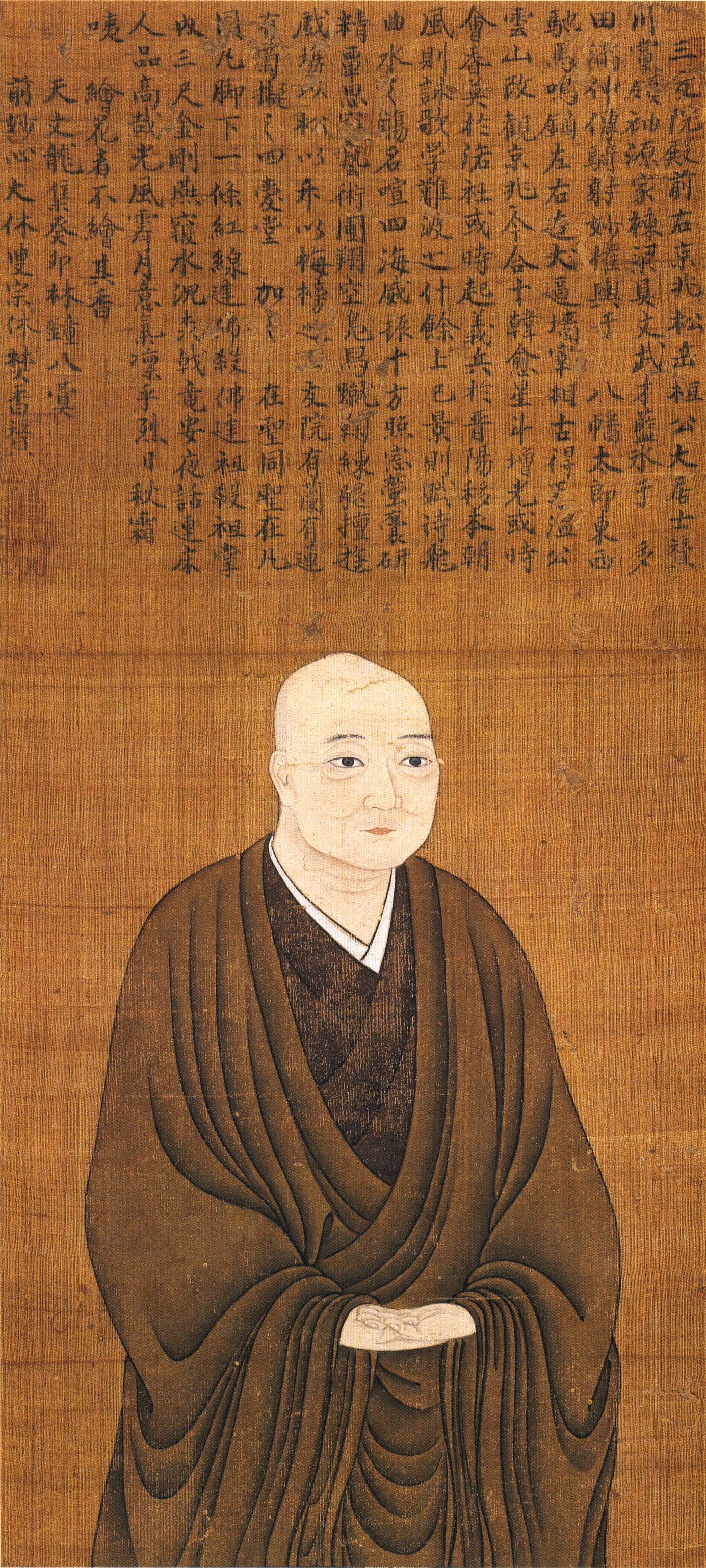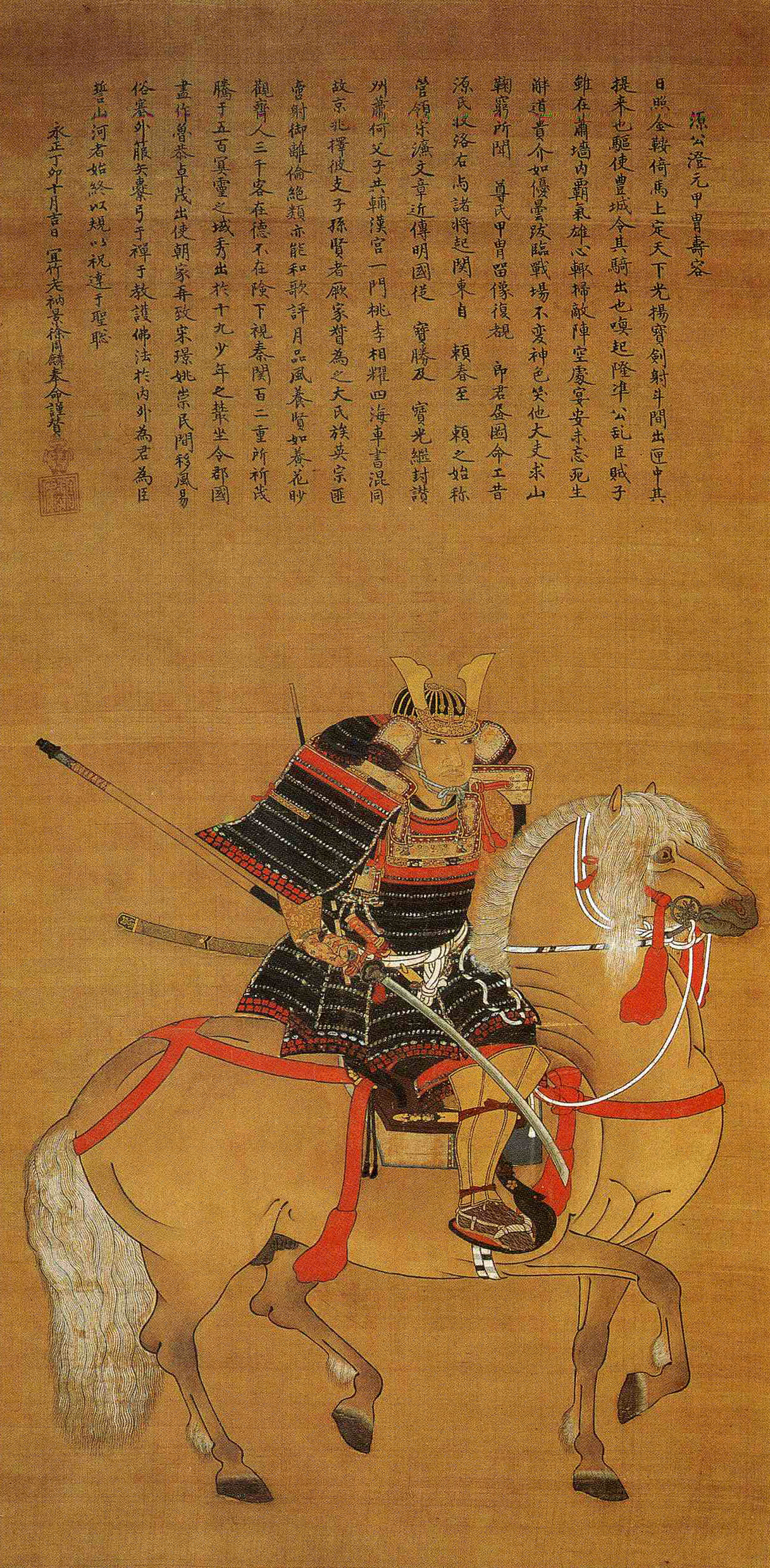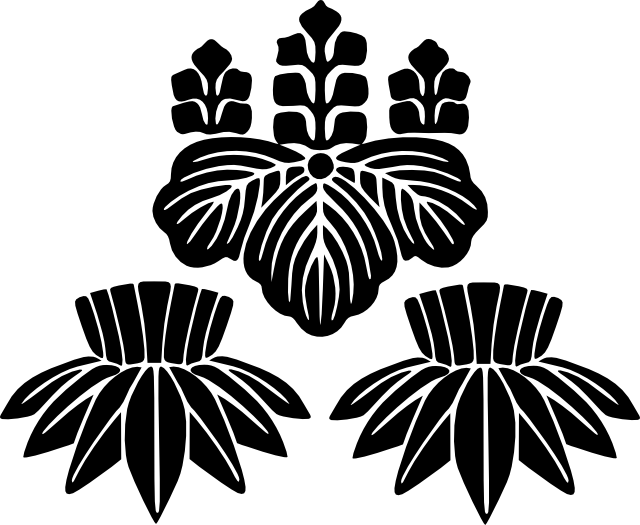|
Shōzui Castle
was a Muromachi period, Muromachi to Sengoku period Japanese castle located in the town of Aizumi, Tokushima , Aizumi, Itano District, Tokushima, Itano District, Tokushima Prefecture, Japan. Its ruins have been protected as a Historic Sites of Japan, National Historic Site since 2001, with the area under protection expanded in 2015. History Shōzui Castle is located on a loop of the former course of the Yoshino River,approximately five kilometers north from the center of Tokushima (city), Tokushima city. The present course of the river is now three kilometers to the south of the castle due to flood control projects in the Edo period, but when the castle was constructed it was directly on the river and could be reached by boat from the mainland of Honshu. The castle was surrounded by small creeks and marshes which formed part of its natural defenses.It is unknown when this site was first fortified, but it is believed to have been by Ogasawara Nagakiyo in the Kamakura period, and to ... [...More Info...] [...Related Items...] OR: [Wikipedia] [Google] [Baidu] |
Aizumi, Tokushima
270px, Aizumi Town Hall is a town located in Itano District, in northeastern Tokushima Prefecture, Japan. , the town had an estimated population of 35,512 in 15198 households and a population density of 2200 persons per km².The total area of the town is . Geography Aizumi is located in northern part of Tokushima Prefecture on the island of Shikoku. It is situated on the north side of the downstream area of the Yoshino River. The area is an alluvial fan which was once subject to frequent flooding before Edo period flood control projects shifted the course of the Yoshino River from its original stream to its current stream some three kilometers south. At 5.17 meters average elevation above sea level the area is a very flat area with no hilly or mountainous areas found within the confines of the town district. Neighbouring municipalities Tokushima Prefecture * Tokushima * Naruto * Itano * Kitajima * Kamiita * Ishii Climate Aizumi has a Humid subtropical climate (Köppen ... [...More Info...] [...Related Items...] OR: [Wikipedia] [Google] [Baidu] |
Honshu
, historically called , is the largest and most populous island of Japan. It is located south of Hokkaidō across the Tsugaru Strait, north of Shikoku across the Inland Sea, and northeast of Kyūshū across the Kanmon Straits. The island separates the Sea of Japan, which lies to its north and west, from the North Pacific Ocean to the south and east. It is the seventh-largest island in the world, and the second-most populous after the Indonesian island of Java. Honshu had a population of 104 million , constituting 81.3% of the entire population of Japan, and is mostly concentrated in the coastal areas and plains. Approximately 30% of the total population resides in the Greater Tokyo Area on the Kantō Plain. As the historical center of Japanese cultural and political power, the island includes several past Japanese capitals, including Kyōto, Nara and Kamakura. Much of the island's southern shore forms part of the Taiheiyō Belt, a megalopolis that spans several of the Japane ... [...More Info...] [...Related Items...] OR: [Wikipedia] [Google] [Baidu] |
Ashikaga Shogunate
The , also known as the , was the feudal military government of Japan during the Muromachi period from 1336 to 1573.Nussbaum, Louis-Frédéric. (2005)"''Muromachi-jidai''"in ''Japan Encyclopedia'', p. 669. The Ashikaga shogunate was established when Ashikaga Takauji was appointed ''Shōgun'' after overthrowing the Kenmu Restoration shortly after having overthrown the Kamakura shogunate in support of Emperor Go-Daigo. The Ashikaga clan governed Japan from the Imperial capital of Heian-kyō (Kyoto) as ''de facto'' military dictators along with the ''daimyō'' lords of the ''samurai'' class. The Ashikaga shogunate began the Nanboku-chō period between the Pro-Ashikaga Northern Court in Kyoto and the Pro-Go-Daigo Southern Court in Yoshino until the South conceded to the North in 1392. The Ashikaga shogunate collapsed upon outbreak of the Ōnin War in 1467, entering a state of constant civil war known as the Sengoku period, and was finally dissolved when ''Shōgun'' Ashikaga Y ... [...More Info...] [...Related Items...] OR: [Wikipedia] [Google] [Baidu] |
Miyoshi Nagayoshi
, eldest son of Miyoshi Motonaga, was a Japanese samurai and powerful ''daimyō'' who ruled seven provinces of Kansai. Nagayoshi held the court titles of Shūri-dayū (修理太夫) and Chikuzen no Kami (筑前守), and was also known by the more Sinic reading of his name: Chōkei (長慶). During his tenure, the Miyoshi clan would experience a great rise of power, and engage in a protracted military campaign against its rivals, the Rokkaku and the Hosokawa. Nagayoshi defeated Ashikaga Yoshiteru and banished him from Kyoto in 1555. Following his death, Nagayoshi was succeeded by his adopted son, Yoshitsugu (the son of Sogō Kazunari, his younger brother). Nagayoshi died in Iimoriyama Castle in 1564.飯盛山城と三好長慶 仁木宏,中井均,中西裕樹 NPO法人摂河泉地域文化研究所 P.56 Family * Father: Miyoshi Motonaga * Mother: Unknown *Siblings: **Miyoshi Yoshikata **Atagi Fuyuyasu **Sogō Kazumasa * Wives ** Hatano Tanemichi's daughter * Children * ... [...More Info...] [...Related Items...] OR: [Wikipedia] [Google] [Baidu] |
Suō Province
was a province of Japan in the area that is today the eastern part of Yamaguchi Prefecture. It was sometimes called . Suō bordered on Aki, Iwami, and Nagato Provinces. The ancient provincial capital was in Hōfu. Suō was ruled for much of the Muromachi period by the Ōuchi clan, who built a castle at Yamaguchi. In the Sengoku period it was conquered by the Mōri clan, and was ruled remotely by them for much of the Edo period. Shrines and temples ''Tamanoya jinja'' was the chief Shinto shrine (''ichinomiya'') of Suō. retrieved 2012-11-20. Historical districts * ** ...[...More Info...] [...Related Items...] OR: [Wikipedia] [Google] [Baidu] |
Ōuchi Clan
was one of the most powerful and important families in Western Japan during the reign of the Ashikaga shogunate in the 12th to 14th centuries. Their domains, ruled from the castle town of Yamaguchi, comprised six provinces at their height, and the Ōuchi played a major role in supporting the Ashikaga in the Nanboku-cho Wars against the Imperial Court. The Ōuchi remained powerful up until the 1560s, when they were eclipsed by their vassals, the Mōri clan. History Local legend in modern Yamaguchi City has it that the Ōuchi clan were of Korean origins, specifically descended from a prince of Baekje. The ''Ōuchi-shi Jitsruroku'' (大内氏実録), a work of the historian Kondō Kiyoshi (近藤清石, 1833–1916), is one of the books which adopt this legend. However, some scholars are in dispute, and even traditions are contradictory to each other. Modern day members of the Ouchi clan think that there is no dispute, and they strongly identify with Baekje. According to the ... [...More Info...] [...Related Items...] OR: [Wikipedia] [Google] [Baidu] |
Hosokawa Takakuni
Hosokawa Takakuni (, 1484 – 17 July 1531) was the most powerful military commander in the Muromachi period under Ashikaga Yoshiharu, the twelfth ''shōgun''. His father was Hosokawa Masaharu, a member of the branch of the Hosokawa clan. His childhood name was Rokuro (六郎). In 1507, Hosokawa Masamoto was killed by his foster son, Hosokawa Sumiyuki who had been disinherited by Masamoto. Takakuni supported Hosokawa Sumimoto and got credit for putting down Sumiyuki. Because of that, he got involved with the Muromachi shogunate. In 1508, when Ōuchi Yoshioki marched his armies into Kyoto with Ashikaga Yoshitane (the former ''shōgun'' who had escaped to Suō Province), Takakuni conspired with them and purged the shogun Ashikaga Yoshizumi and Sumimoto to Ōmi Province. Takakuni and Yoshioki took hold of the Muromachi shogunate. Takakuni took over as head of the Hosokawa family and became ''Kanrei''. In addition, he also held the post of ''shugo'' of Settsu Province, Tanba Provin ... [...More Info...] [...Related Items...] OR: [Wikipedia] [Google] [Baidu] |
Hosokawa Sumimoto
was a samurai commander in the Muromachi period during the 16th century of Japan. Sumimoto was one of the few sons of Hosokawa Yoshiharu and an adopted son of Hosokawa Masamoto, who was the Kanrei of the Ashikaga shogunate. His roots was the Hosokawa clan at Awa Province. His childhood name was Rokuro (六郎). Masamoto did not have his own child and originally had decided to let Hosokawa Sumiyuki, who was from Kujyō clan, succeed the house. However, he changed his mind later and decided to let Sumimoto, who was adopted after Sumiyuki, succeed the house. This naturally caused a rift between Sumimoto and Sumiyuki. In 1507, Masamoto was killed by an adherent of Sumiyuki. Sumimoto was attacked by a retainer of Sumiyuki, Kozai Motonaga, and escaped to Koga, Ōmi Province, taking refuge at Rokkaku Takayori. Following this, a powerful vassal under the Hosokawa, known as Miyoshi Yukinaga (Nagateru), raised troops in Settsu and destroyed Sumiyuki in the young Sumimoto's name. Afte ... [...More Info...] [...Related Items...] OR: [Wikipedia] [Google] [Baidu] |
Hosokawa Masamoto
was a deputy-''shōgun'' of the Hosokawa clan of Japan, and son of Hosokawa Katsumoto. Masamoto was appointed to this rank during 1486. For a brief period this title was lost by Hatakeyama Masanaga but was regained in time. When Ashikaga Yoshihisa died childless during the year of 1489, Masamoto supported the nomination of Ashikaga Yoshizumi as successor in opposition to Ashikaga Yoshitane. Masamoto thought that the post of deputy-shogun would return to Hosokawa Masanaga due to Yoshitane's closeness with Hatakeyama Masanaga and his own objections to Yoshitane's rise. During Masanaga's struggle with a rival branch of the Hatakeyama clan, Yoshitane led troops to the assistance of Masanaga. Masamoto then assisted his force to the Hatakeyama, ultimately defeating those of Masanaga and Yoshitane. Masanaga killed himself during the battle and Yoshitane became a prisoner at Kyoto. His childhood name was Sumiakamaru (聡明丸). Masamoto exiled Yoshitane and made Ashikaga Yoshizumi t ... [...More Info...] [...Related Items...] OR: [Wikipedia] [Google] [Baidu] |
Yamana Clan
The was a Japanese samurai clan which was one of the most powerful of the Muromachi period (1336-1467); at its peak, members of the family held the position of Constable (''shugo'') over eleven provinces. Originally from Kōzuke Province, and later centered in Inaba Province, the clan claimed descendance from the Seiwa Genji line, and from Minamoto no Yoshishige in particular. The clan took its name from the village of Yamana in present-day Gunma Prefecture. They were valued retainers under Minamoto no Yoritomo, and counted among his ''gokenin''. The Yamana were among the chief clans in fighting for the establishment of the Ashikaga shogunate, and thus remained valued and powerful under the new government. They were Constables of five provinces in 1363, and eleven a short time later. However, members of the Yamana clan rebelled against the shogunate in the Meitoku Rebellion of 1391 and lost most of their land. Yamana Sōzen (1404 – 1473), likely the most famous member of the ... [...More Info...] [...Related Items...] OR: [Wikipedia] [Google] [Baidu] |
Ōnin War
The , also known as the Upheaval of Ōnin and Ōnin-Bunmei war, was a civil war that lasted from 1467 to 1477, during the Muromachi period in Japan. ''Ōnin'' refers to the Japanese era during which the war started; the war ended during the Bunmei era. A dispute between a high official, Hosokawa Katsumoto, and a regional lord, Yamana Sōzen, escalated into a nationwide civil war involving the Ashikaga shogunate and a number of ''daimyō'' in many regions of Japan. The war initiated the Sengoku period, "the Warring States period". This period was a long, drawn-out struggle for domination by individual ''daimyō'', resulting in a mass power-struggle between the various houses to dominate the whole of Japan. Origin The ''Ōnin'' conflict began as a controversy over who would succeed ''shōgun'' Ashikaga Yoshimasa. In 1464, Yoshimasa had no heir. He persuaded his younger brother, Ashikaga Yoshimi, to abandon the life of a monk, and named him heir. In 1465, the unanticipated birth of ... [...More Info...] [...Related Items...] OR: [Wikipedia] [Google] [Baidu] |
Awa Province (Tokushima)
was a province of Japan in the area that is today Tokushima Prefecture on the island of Shikoku. Nussbaum, Louis-Frédéric. (2005). "''Awa no Kuni''" in . Awa was bordered by Tosa, Sanuki, and Iyo Provinces. Its abbreviated form name was . In terms of the Gokishichidō system, Awa was one of the provinces of the Nankaidō circuit. Under the ''Engishiki'' classification system, Awa was ranked as one of the 35 "superior countries" (上国) in terms of importance, and one of the "middle countries" (中国) in terms of distance from the capital. The provincial capital was located in what is now the city of Tokushima. History Awa has been settled since the Japanese Paleolithic and the remains of Yayoi and Kofun period settlements and burial mounds have been found especially in the fertile Yoshino River valley. Per the ''Kogo Shūi,'' the name of the province was originally written "粟国" and was associated with the production of millet. Per the ''Kujiki'', the ''kuni n ... [...More Info...] [...Related Items...] OR: [Wikipedia] [Google] [Baidu] |






